If you use Adobe Premiere Pro for all your video editing needs, you'll know how essential it is that you have a good laptop.
While the program can run on cheap laptops, it's going to take a hell of a lot of time, and that's going to get very frustrating, particularly if you're up against deadlines.
You'll need a laptop that has good picture resolution and sound quality, with a fast clock speed which allows your videos to render quickly.
This way, you'll get the most out of Premiere Pro and won't be banging your head against the screen due to poor image quality and slow processing.
You may also want something lightweight, so you can take your laptop to meet clients and colleagues to show them rough cuts, or to work through an edit with them.
But, where to start?
We understand that there are a million and one laptops on the market, all boasting to be the best.
We've aimed to cut your research down to just this one article, which will contain everything you need to know - from Adobe's minimum requirements for running Premiere Pro, to the best laptops on the market, to a Buyer's Guide - so you know exactly what to look out for.
What are the minimum requirements for Adobe Premiere Pro?
- Intel® 6thGen or newer CPU - or AMD equivalent
- 8 GB of RAM
- 1280 x 800 monitor resolution
Bear in mind that the above are just a few of the minimum requirements, and Adobe actually recommends far more, such as:
- Intel® 7thGen or newer CPU - or AMD equivalent
- 16 GB of RAM for HD media
- 32 GB for 4K media or higher
- Adobe-recommended GPU card for GPU-accelerated performance
Of course, the laptops with the recommended features may be out of your budget, and if this is the case, don't panic.
Hopefully, our selection of laptops caters to a range of budgets, lifestyles, and editing requirements.
But first, these are the most important features for a laptop to ensure Adobe Premiere Pro runs optimally…
- Get a CPU with 6-8 cores
- 8GB RAM for >>60 min footage
- or 16GB for +60min footage.
- 32-64GB is only necessary if you plan on using After Effects a lot.
- A mid-range GPU such as AMD Radeon RX580 or the NVIDIA GTX 1060 for anyone using Premiere Pro for more than just simple cuts and transitions
- 1080p IPS resolution and a 15-17” widescreen
Now we know what we're looking for, let's take a look at some of the top laptops on the market…
1. Asus ROG Strix Scar III (2019) Gaming Laptop
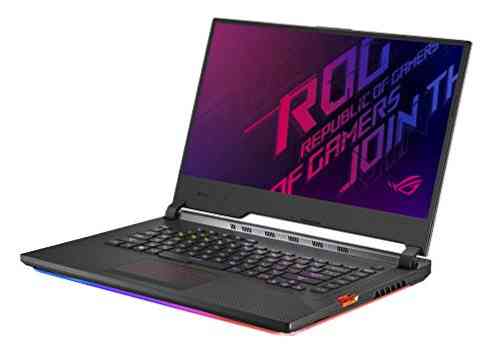
When you're on the lookout for a suitable laptop for video editing, it's worth looking at gaming laptops. Why, you ask?
Well, whether you're a gamer or not, gaming laptops often feature the latest CPU and GPU, as well as a wider screen - for example, the ASUS Strix Scar has an 80% screen-to-body ratio, 5.26mm slim-bezels widescreen, and GeForce graphics.
The ASUS Strix Star comes with a pretty hefty price tag attached to it, as these laptops are expensive to manufacture as well as buy. If you can afford a laptop like this, then this is a gaming laptop with the latest technology integrated into it.
However, if it seems a bit much for you, you can go for a cheaper gaming laptop with a mid-range GPU and it will still cope relatively well with Premiere Pro.
Pros:
- 15.6” 1080p screen with 5.26mm slim-bezels
- 9th Gen Intel Core i7-9750h Processor
- 16GB DDR4 2666MHz RAM
- 80% screen to body ratio
Cons:
- It's expensive
- Battery time is 4 hours
Buy Here: Amazon
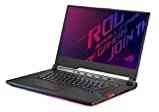 Asus ROG Strix Scar III (2019) Gaming Laptop, 15.6” 240Hz IPS Type Full HD, NVIDIA GeForce RTX 2070, Intel Core i7-9750H, 16GB DDR4, 1TB PCIe Nvme SSD, Per-Key RGB KB, Windows 10, G531GW-DB76 Asus ROG Strix Scar III (2019) Gaming Laptop, 15.6” 240Hz IPS Type Full HD, NVIDIA GeForce RTX 2070, Intel Core i7-9750H, 16GB DDR4, 1TB PCIe Nvme SSD, Per-Key RGB KB, Windows 10, G531GW-DB76
|
2. Acer Nitro 5 Gaming Laptop
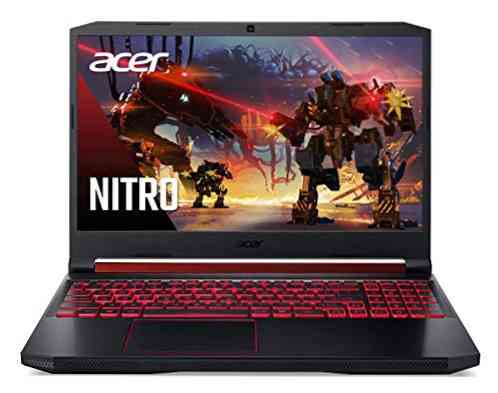
A cheaper alternative to the Strix Scar III, and the cheapest laptop with generation Core i5 9300H CPU and a mid-range GTX 1650. Despite the 15.6” Full HD IPS screen, this laptop is compact and easy to carry around with you thanks to the sleek, portable design.
The 8G RAM is adequate for basic editing and video rendering, but you may require 16G eventually. You can easily update the RAM yourself, as there is no 16G option in this model, and if anything, you'll save yourself money, anyway.
Pros:
- Good for those on a budget
- Intel Core i5 9300H
- GeForce GTX 1650
- 256 PCIe SSD
- 15” FHD 1080p IPS
- 5-hour battery
Cons:
- 8G RAM
Buy Here: Amazon
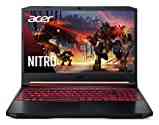 Acer Nitro 5 Gaming Laptop, 9th Gen Intel Core i5-9300H, NVIDIA GeForce GTX 1650, 15.6" Full HD IPS Display, 8GB DDR4, 256GB NVMe SSD, Wi-Fi 6, Backlit Keyboard, Alexa Built-in, AN515-54-5812
Acer Nitro 5 Gaming Laptop, 9th Gen Intel Core i5-9300H, NVIDIA GeForce GTX 1650, 15.6" Full HD IPS Display, 8GB DDR4, 256GB NVMe SSD, Wi-Fi 6, Backlit Keyboard, Alexa Built-in, AN515-54-5812 - 9th Generation Intel Core i5-9300H Processor (Up to 4.1 GHz)
- 15" Full HD Widescreen IPS LED-backlit display; NVIDIA GeForce GTX 1650 Graphics with 4 GB of dedicated GDDR5 VRAM
- 8GB DDR4 2666MHz Memory; 256GB PCIe NVMe SSD (2 x PCIe M.2 slots - 1 slot open for easy upgrades) & 1 - Available hard drive bay
- LAN: 10/100/1000 Gigabit Ethernet LAN (RJ-45 port); Wireless: Intel Wireless Wi-Fi 6 AX200 802.11ax
- Backlit keyboard; Acer Cool Boost technology with twin fans and dual exhaust ports
3. MSI GF63 THIN 9SCX-005 15. 6"
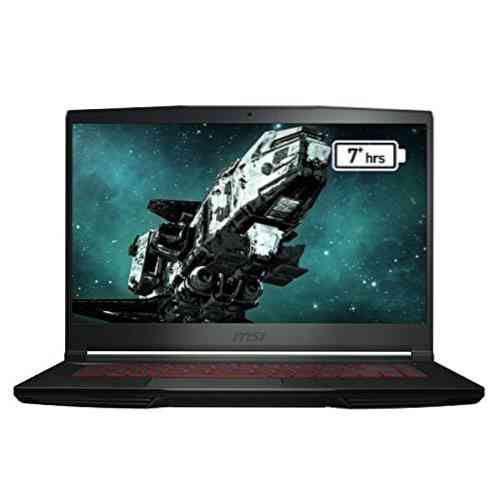
This is pretty much the same as the Acer Nitro, with the same RAM and core but a slightly lower CPU speed. It's slightly heavier than the Nitro (weighing 7lbs) but on the plus side, it has a better battery life, too (7 hours).
Some might also argue that MSI is a superior gaming laptop brand to Acer - so that is also a reason why you might be tempted by the MSI, particularly if the Nitro runs out of stock.
Pros:
- Core i5-9300H
- 8GB DDR4 RAM
- NVIDIA 1650GTX
- 256GB PCIe NVMe
- 15” full HD IPS
- 7 hours of battery life
Cons:
- Lower CPU speed
- 8 GB RAM only suitable for basic editing
Buy Here: Amazon
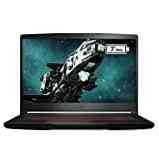 MSI GF63 THIN 9SCX-005 15. 6" FHD Gaming Laptop Intel Core i5-9300H GTX1650 8GB 256GB NVMe SSD Win10
MSI GF63 THIN 9SCX-005 15. 6" FHD Gaming Laptop Intel Core i5-9300H GTX1650 8GB 256GB NVMe SSD Win10 - 15 6" FHD (1920*1080) IPS-Level 60Hz 45%NTSC Thin Bezel NVIDIA GeForce GTX1650 [Max-Q] 4G GDDR5
- Core i5-9300H 2 4 - 4 1GHz Intel 9560 Jefferson Peak (2x2 802 11 ac)
- 256GB NVMe SSD 8GB (8G*1)DDR4 2666MHz 2 Sockets Max Memory 64GB
- USB 3 2 Gen1 Type C *1 USB 3 2 Gen1 *3,720p HD Webcam
- Win 10 Multi-language Speakers 2W*2 3 cell (51Whr) Li-Polymer 150W
4. Microsoft Surface Book 3 - 15" Touch-Screen
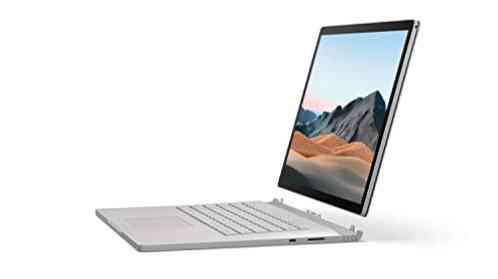
If you're somebody who works from a range of locations, who's always on the go, one of the challenges you're likely to encounter is how to find a laptop with the GPU and CPU required for video editing, that is also lightweight enough to carry around.
In other words, you need a lot of power in a compact design, which is exactly what the Microsoft Surface Book offers.
With quad-core powered, 10th Gen Intel Core processors, and fast, clear graphics powered by NVIDIA GTX GeForce GPU, this laptop has all of the features of the gaming ones we've gone through, yet it weighs just 7lbs.
It also has an awesome battery life of up to 17.5 hours, with improved standby that prolongs battery life when you're not using it.
We recommend going for the 16GB version and a dedicated GPU. While it can be tempting to cut corners and opt for a smaller RAM, this laptop isn't easily upgradable, so bear this in mind when choosing your specific requirements.
Pros
- 10th Gen Intel Core processors
- NVIDIA GTX GeForce GPU
- Up to 17.5 hours of battery life
- Robust laptop, powerful tablet, and portable studio in one
- 256 flash memory
- 16 GB-32 GB RAM
- Lightweight and portable
Cons
- Super expensive
Buy Here: Amazon
 NEW Microsoft Surface Book 3 - 15" Touch-Screen - 10th Gen Intel Core i7 - 16GB Memory - 256GB SSD (Latest Model) - Platinum
NEW Microsoft Surface Book 3 - 15" Touch-Screen - 10th Gen Intel Core i7 - 16GB Memory - 256GB SSD (Latest Model) - Platinum - Most powerful Surface laptop yet, with quad-core powered, 10th Gen Intel Core processors. Now 30% faster than Surface Book 2 15”.
- Fastest graphics on Surface, powered by NVIDIA GTX GeForce GPU.
- Power when you need it. Up to 17.5 hours battery life[1] - plus improved standby that extends battery life when you're away.
- Robust laptop, powerful tablet, and portable studio in one.
- The connections you need, including USB-A, USB-C, and full-size SD card slot.
5. ASUS VivoBook S Ultra Thin and Portable Laptop
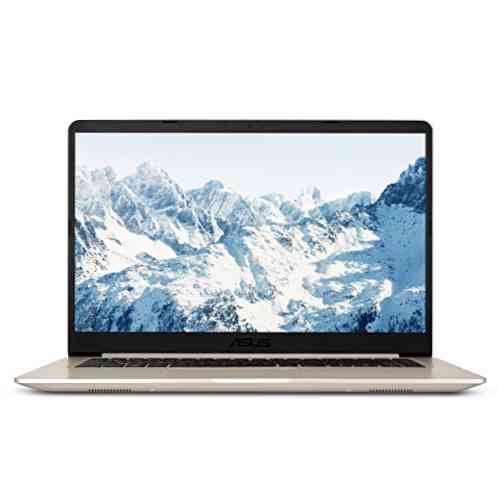
Another portable laptop that packs a punch, the ASUS Vivo has a powerful Intel Core processor and 8GB DDR4 RAM, delivering ultra-smooth visuals thanks to the 0.3” NanoEdge bezel and 80% screen-to-body ratio, plus, it weighs just 3.70lbs.
The ASUS VivoBook fits a full-size 15.6” FHD display into a typical 14-inch laptop frame and features WideView technology with viewing angles of up to 178°, ensuring colors and contrast remain vivid and bold, even when viewed from extreme angles, making it perfect for showing your edits to colleagues and clients.
Pros
- 4 GHz CPU
- 1920×1080 pixels
- Lightweight and portable
- Intel Core i7-8550U Processor
- 80% screen-to-body ratio
- WideView technology
Cons
- 8GB DDR4 RAM
Buy Here: Amazon
 ASUS VivoBook S Ultra Thin and Portable Laptop, Intel Core i7-8550U Processor, 8GB DDR4 RAM, 128GB SSD+1TB HDD, 15.6” FHD WideView Display, ASUS NanoEdge Bezel, S510UA-DS71
ASUS VivoBook S Ultra Thin and Portable Laptop, Intel Core i7-8550U Processor, 8GB DDR4 RAM, 128GB SSD+1TB HDD, 15.6” FHD WideView Display, ASUS NanoEdge Bezel, S510UA-DS71 - 15.6” FHD (1920 x 1080) WideView color rich display;Webcam : VGA Camera
- High performance 128GB SSD + 1TB HDD storage combo; 8GB DDR4 RAM
- Slim 14.2” wide, 0.7” thin; 0.3” ASUS NanoEdge bezel with 80% screen to body ratio
- Ergonomic backlit keyboard with fingerprint sensor; Aluminum cover. Graphics: Intel HD
- Comprehensive connections including USB 3.1 Type C (Gen 1), USB 3.0, USB 2.0, and HDMI; Dual band 802.11ac Wi Fi (*USB Transfer speed may vary. Learn more at ASUS website)
Best Laptop for Hackintosh Buyers Guide
CPU
CPU stands for Central Processing Unit and tells you how many tasks a CPU core can complete in a second, so in video editing terms, that's how long it will take you to edit a video, which could be the difference between the edit taking a whole day, or just a few hours.
The number of cores in a laptop refers to the physical cores within the CPU - so how many operations it can perform simultaneously.
The frequency of the CPU is indicated through its clock speed, and basically, the higher the clock speed the better because this will impact how quickly you can apply effects to your video, render it, and encode it.
On the other hand, experts suggest that multi-core CPUs are more beneficial than clock speed. Roughly, premiere pro requires up to 8 cores for 1080p and 10 cores for 4k resolution, though generally most laptops are limited to 4-6.
However with a laptop (as opposed to a desktop) you're getting other benefits such as portability. The key thing to know is the more cores, the less time it'll take to render and export your footage - though this largely depends on the source quality, too.
RAM
As we said above, Adobe requires at least 8 GB of RAM to operate, and if on average your cuts are less than 60 min, this will suffice.
However, 16GB will allow optimal video editing, and you can always opt for external plug-ins to upgrade to 32GB if you're using other programs such as After Effects.
Display
While it can be difficult to find a display which 100% matches your needs, key things to look out for are IPS panels which have greater colorspace and better viewing angles than the TN alternative, and a resolution of at least 1080p min.
While much of the focus in the video world is now on 4k videos, you don't necessarily have to have a 4k resolution display for 4k video editing, as your software will scale it down accordingly.
You also need to decide between a glossy or matte screen, and neither is the better choice, it's merely personal preference. Glossy usually has brighter colors, while matte can be easier to focus on.
GPU
GPU is fast becoming the most important thing in the computer world. This stands for 'graphics processing unit', which is responsible for rapidly manipulating your computer's memory to accelerate the performance of image and graphics creation.
It's therefore pretty much essential for video editing, as it'll improve video rendering and export times.
However, if you use Premiere Pro for simple cuts, transitions, and other basic effects then you do not need a GPU to improve rendering/export times.
Portability
How portable your laptop needs to be largely depends on your daily routine. If you're out and about a lot and tend to work from various locations, then you're going to want something lightweight.
While most powerful laptops tend to be chunkier, there are some more portable designs out there, they're just few and far between.
Check out the ASUS VivoBook or Microsoft Surface Book if you want something that packs a punch without weighing a tonne - just be prepared to spend a little bit extra.
Another thing to bear in mind is battery life. If you often work in public spaces where plug sockets can be scarce, be sure to get a laptop with at least 5-7 hours of battery.
Cost
Laptops that are good for Adobe Premiere Pro do tend to be on the more expensive side, and while there are some budget laptops out there, we definitely recommend spending more for optimal speed and resolution, as this will certainly pay off as you'll be able to edit and render your videos far more quickly.
Expect to pay at least $700 at the low-end of the spectrum, and upwards of $1,000 for a laptop that will really enhance your video editing capabilities and experience.
The main thing is to not compromise on RAM capacity, as it could cost you more in the long run - or void your warranty - if you decide to upgrade it. If you can afford a 16G over an 8, then go for it.
Frequently Asked Questions
Which laptop is best for premiere pro?
There isn't one sole laptop best-suited to Premiere Pro. All of the laptops featured in this article are well suited to the program, but offer various benefits when it comes to portability, battery life, and RAM capacity, for example.
The main thing to keep in mind is gaming laptops are probably best for video editors, as these have the best CPU and GPU integrated into their systems, providing quick processing speeds and super sharp, fast graphics.
How much RAM do I need for video editing?
8GB is the bare minimum, and this will quickly get overwhelmed. 16GB is considered the sweet spot, though.
32GB is only necessary if you plan on using After Effects and other additional programs.
 Phenquestions
Phenquestions


